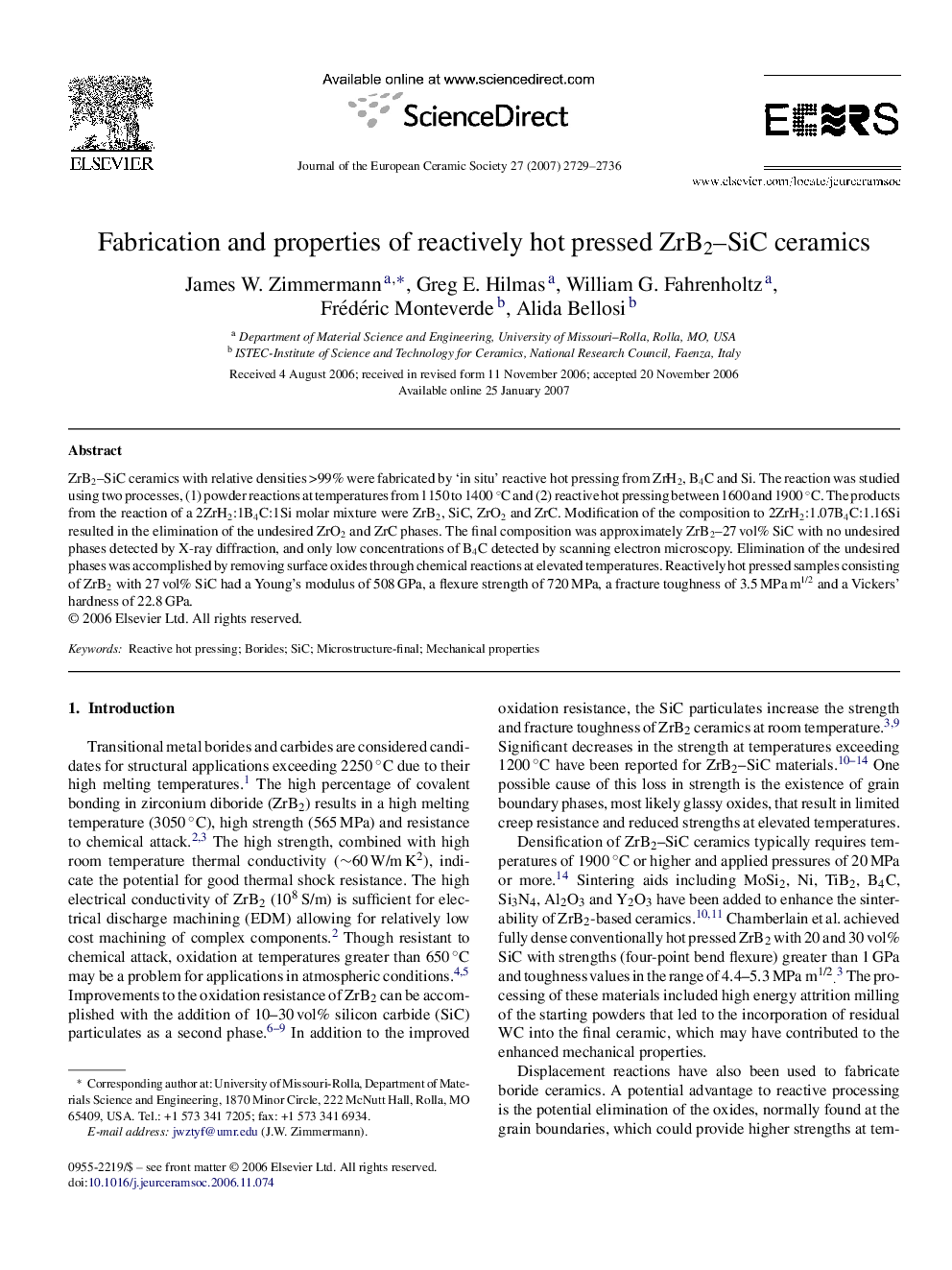| Article ID | Journal | Published Year | Pages | File Type |
|---|---|---|---|---|
| 1478470 | Journal of the European Ceramic Society | 2007 | 8 Pages |
ZrB2–SiC ceramics with relative densities >99% were fabricated by ‘in situ’ reactive hot pressing from ZrH2, B4C and Si. The reaction was studied using two processes, (1) powder reactions at temperatures from 1150 to 1400 °C and (2) reactive hot pressing between 1600 and 1900 °C. The products from the reaction of a 2ZrH2:1B4C:1Si molar mixture were ZrB2, SiC, ZrO2 and ZrC. Modification of the composition to 2ZrH2:1.07B4C:1.16Si resulted in the elimination of the undesired ZrO2 and ZrC phases. The final composition was approximately ZrB2–27 vol% SiC with no undesired phases detected by X-ray diffraction, and only low concentrations of B4C detected by scanning electron microscopy. Elimination of the undesired phases was accomplished by removing surface oxides through chemical reactions at elevated temperatures. Reactively hot pressed samples consisting of ZrB2 with 27 vol% SiC had a Young's modulus of 508 GPa, a flexure strength of 720 MPa, a fracture toughness of 3.5 MPa m1/2 and a Vickers’ hardness of 22.8 GPa.
